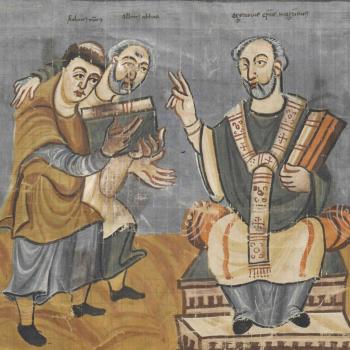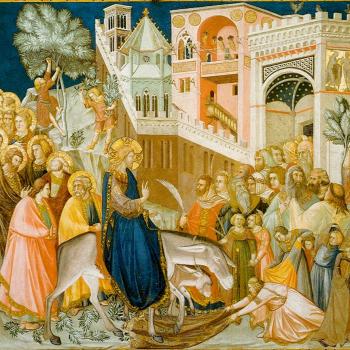In my last blogpost, I discussed the political and cultural transformations of the 1970s, a global shift not just to conservatism but particularly to religious traditionalism. In different forms, we see such a pattern in the US, but also in countries like Israel, Iran and India, and across the Islamic world. In the words of Gilles Kepel, these were the years of “The Revenge of God.”
Academics, no less than policy makers, struggled to understand the new reality. In his 1978 book on the growing Iranian crisis, influential scholar Fred Halliday analyzed every possible scenario for the post-Shah world, detailing every freakish Marxist sect, until in a footnote he commented, reluctantly, on the existence of some reactionary Shi’ite Muslims. More succinctly, US Vice President Walter Mondale famously reacted to the Khomeini regime by demanding, “What in Hell is an ayatollah anyway”? US intelligence agencies could provide little enlightenment on the subject. Within the United States, news media struggled similarly to understand the old/new religious world. When presidential candidate Jimmy Carter announced in 1976 that he had been born again, the main nightly news programs treated the term with bemusement, and sought out experts to assess whether this was some kind of cult concept. Yet at the time, that born again status was boasted by at least a quarter of Americans.
For what it’s worth, my paper offered this structural model for what was happening in and around these years. It’s a work in progress. Among the critical themes, I highlight the following:
- The rejection of a master narrative of seemingly unstoppable progressive, secular liberalism. A widespread perception holds that the nation had taken a radically wrong turn that even threatened its destruction.
- Rhetorical linkages between national decline and moral crisis. This perception was based on concerns and fears that social changes were subverting traditional gender and family roles, especially in terms of concepts of masculinity.
- The economic crash gave an acute material basis to generalized malaise, and discrediting existing regimes and assumptions.
- Cities played a critical and highly visible role as rhetorical symbols of national decay, weakness and immorality.
- Economic and political crisis offered an opening to the politics of populist resentment of existing elites. This was accompanied by a widespread interest in conspiracy theories as means of explaining the disasters experienced by the community. The public became willing to consider leaders who personified supposedly traditional values, whose rejection by mainstream elites would be a major part of their attraction and their popular support.
- New forms of media emerge to disseminate anti-elite messages, outside the control of mainstream authorities.
- That populist movement draws into activism large sections of the public that had previously been excluded from active participation in the political process, and which largely defined its interests and values in religious terms. We see the re-emergence of fundamentalist and conservative religious groups that had long existed, but which had been largely excluded from official narratives because their views were so at odds with the assumed mainstream of opinion. The secular narrative falls into profound crisis.
- That religious transformation encourages the popularity of a religious and apocalyptic framework for the critique of authority, with the consequent demonization of enemies. The movement extols the religious destiny of the nation, while older elites and their values are rhetorically excluded from the national community.
- Throughout, children and young people are central to anti-elite rhetoric. Religious activists were drawn from political passivity by government steps that threatened to impose alien elite values on local communities, especially through seizing control of education. Children were thus threatened directly. Demographic and generational tensions permitted and encouraged a rhetoric of young people being dangerously out of control, and in need of protection and supervision. Moral and conservative reform is essential to save children.
- New conservative and populist movements and governments extol values of strength and heroism, usually defined in traditionally masculine terms.
It is possible to find some or all of these features and trends, such grievances and resentments, in a great many eras and social settings. What was new and distinctive about the 1970s, though, was the scale and severity of the economic crash, which so discredited old elites. Radical new political visions suddenly became feasible – or rather, radical Right visions.
Does this model work? If not, we need some alternative global explanation for the wave of parallel movements that swept the world in these very same years.
As Michael Walzer notes in his Paradox of Liberation, “Religious men and women, previously passive and inarticulate, entered the newly created public domain in numbers that ‘greatly exceeded’ the number in the ‘tiny upper crust that led the national movement’.” He could be speaking of India, Israel or Iran, but in the US too, we witness a resurgence of the hitherto silent.
I have already noted noted the puzzlement and even embarrassment with which both commentators and historians treated the rise of conservative religious politics. Commonly, then as now, they seek to explain it as some kind of unnatural departure from “real” or natural political development, possibly arising from the cynical machinations of political factions or economic interests. Viewed globally though, we might well ask whether secular and progressive politics can claim any more normal or natural status than religious or reactionary views.
For many years, Western and especially European scholars examined religious allegiances around the world, commonly with the intent of finding why particular areas and faith traditions resisted seemingly obvious trends towards secularization. From another point of view, though, we might rather ask why it is Europe that is so secular, and whether the rest of the world might not in fact represent the religious norm. Sociologist Grace Davie, for instance, writes of Europe as “the exceptional case” in these maters.
Might we apply a similar perspective to the rise of religious politics during the 1970s? Instead of asking why the world took such a bizarre swing in this era, we might rather ask how regimes could have realistically hoped to maintain secular political assumptions in the face of the widespread religious convictions of the people they were governing – whether we are looking at the US or Israel, India or Iran, Egypt or Turkey. Indeed, we should be impressed that they succeeded as long as they did. Aggressive modernizers lasted until their policies seemed to strike directly at families, and children, or at least could so be portrayed by conservative critics. At that point, radical modernizers became their own gravediggers.
In retrospect, perhaps it is the seemingly secular 1950s and 1960s that should strike us as so bizarre, and in such urgent need of explanation. They were the really exceptional case.
More next time.














